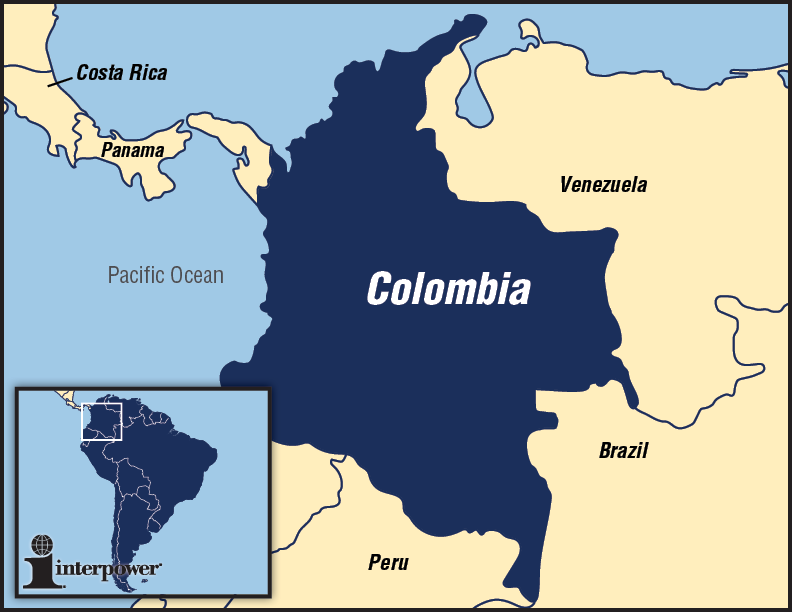Exporting to Colombia
Posted on 1/6/16 12:00 AM

| BANGLADESH | |
|---|---|
| Actual population* | Population world ranking |
| 46,245,297 | 30 |
| Actual GDP (PPP)* | GDP world ranking |
| $526,500,000,000 | 29 |
| Actual GDP (per capita)* | GDP (per capita) world ranking |
| $11,100 | 110 |
*See the end of this blog for definitions
In recent years, Colombia has experienced economic development which has helped to create a growing economy. As a result, numerous trade and investment opportunities are available.
Market research and due diligence are crucial elements to a company’s business success. One market entry strategy is to hire an agent, a representative, or a distributor. Many Colombians prefer to do business with companies who have local connections within the country. When determining contracts and agreements, key characteristics include formality, personal associations, and establishing trust. Knowledge of the requirements in securing that business partner is essential. Visit the country frequently and have an active part in the marketing efforts, such as trade shows and advertising promotions. There are a variety of sources to consult for more information, including the United States Commercial Service and the United Kingdom Trade and Investment.
Colombia has five major commercial hubs within the country—Bogota, Medellin, Barranquilla, Cali and Cartagena. Due to air transportation being available to all of these cities, it is feasible for one agent or distributor to service the whole country. These major cities also have a network of chambers of commerce that can share business information relating to their areas. The Colombian Confederation of Chambers of Commerce (Confecámaras) represents 57 sector entities.
Within the country is an international business community, but there are regional differences, so it is important to know business etiquette. Working breakfasts and lunches are common along with less formal dinner meetings. Events, such as conventions, conferences, and seminars, are becoming more popular and potentially provide excellent market opportunities. Among the resources available to consult for further assistance are the United States Commercial Service and the United Kingdom Trade and Investment.
Customs management is by the Directorate of National Taxes and Customs of Colombia. For information in regards to importing to Colombia, the Minister of Trade, Industry, and Tourism has an explanation of the basic steps that need to be followed.
Colombia is a member of the World Trade Organization and the World Customs Organization. It is also associated with MERCOSUR, the Southern Common Market.
The official language of Colombia is Spanish. Even though many in the business community speak English, have a quality interpreter at the meetings. Written materials should be in Spanish.
In Colombia, the voltage used is 120V at 60Hz. The most frequently specified plug patterns are the NEMA 5-15 and NEMA 1-15 plugs.
Sources:
www.export.gov/colombia
www.gov.uk
www.confecamaras.org.co
www.dian.gov.co
www.mincit.gov.co
www.wto.org
www.wcoomd.org
www.mercosur.int
*Source: www.cia.gov/library/publications/the-world-factbook/index.html
Country comparison—Population: Population compares estimates from the US Bureau of Census based on statistics from population censuses, vital statistics, registration systems, or sample surveys pertaining to the recent past and on assumptions about future trends. (July 2014 est.)
Country comparison—GDP (Purchasing Power Parity): GDP (purchasing power parity [PPP]) compares the gross domestic product (GDP) or value of all final goods and services produced within a nation in a given year. A nation’s GDP at PPP exchange rates is the sum value of all goods and services produced in the country valued at prices prevailing in the United States. (2013 est.)
Country comparison—GDP – per capita (PPP): GDP – per capita (PPP) compares GDP on a purchasing parity basis divided by population as of 1 July for the same year. (2013 est.)




